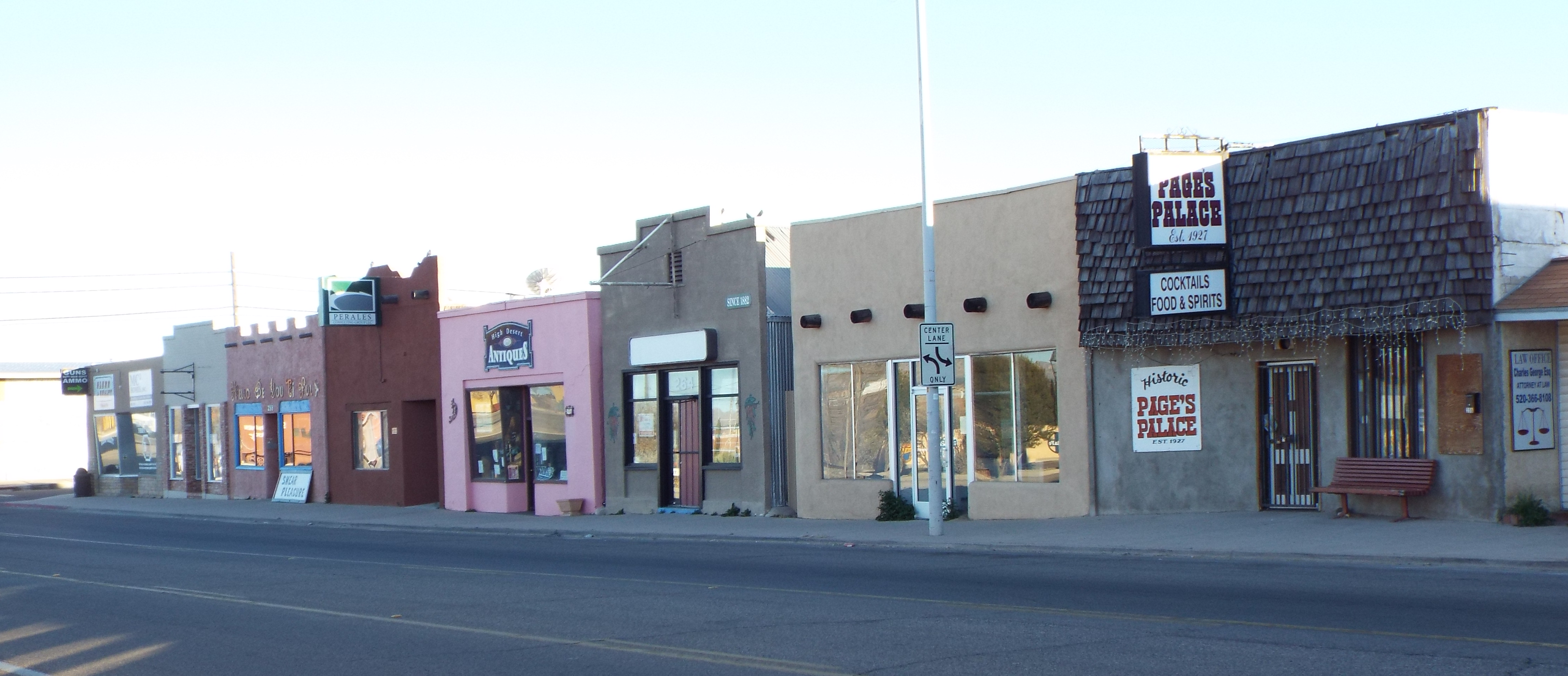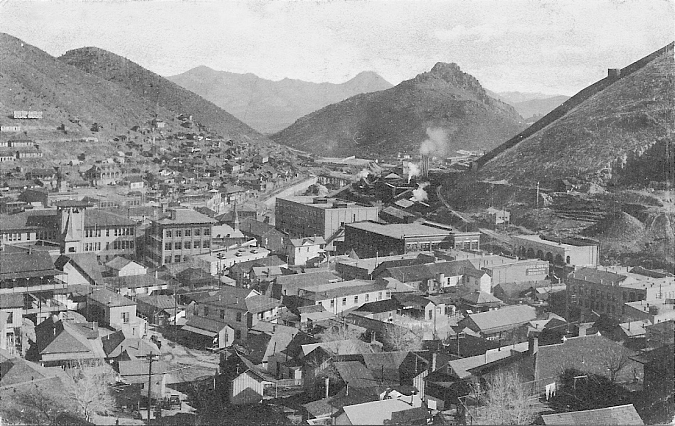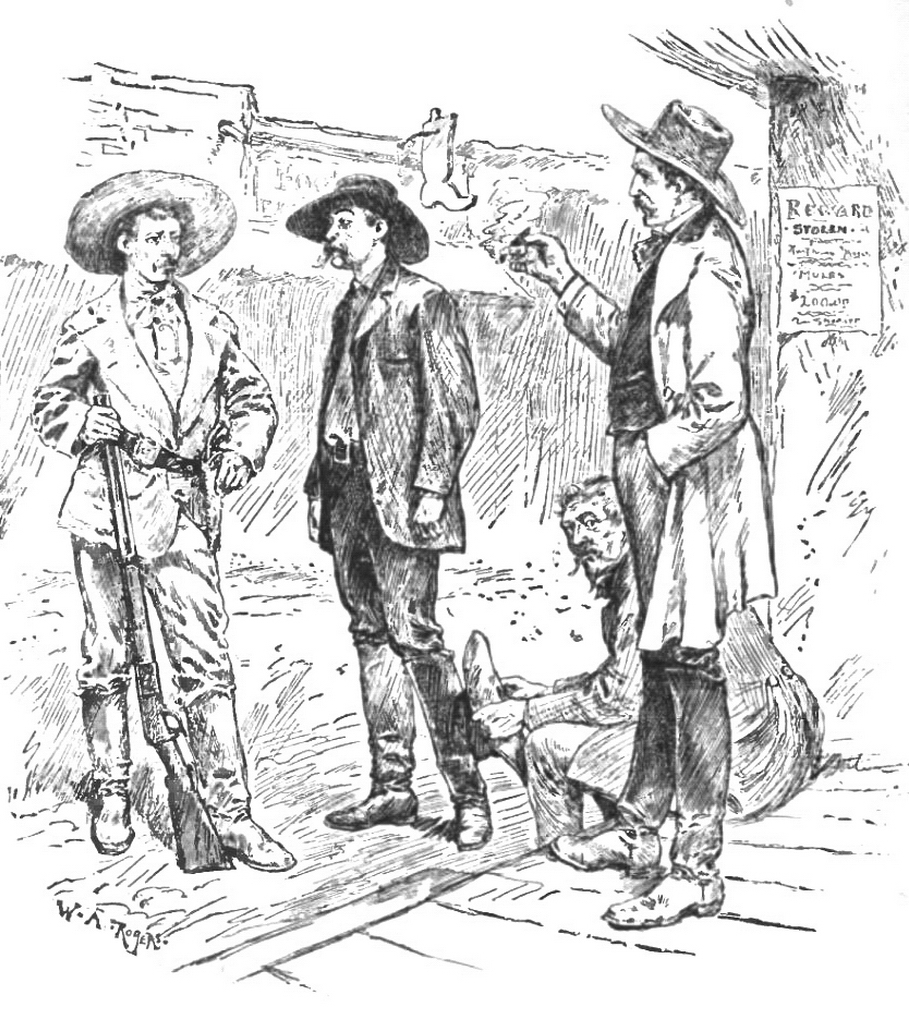|
Benson, Arizona
Benson is a city in Cochise County, Arizona, Cochise County, Arizona, United States. As of the 2020 United States census, 2020 census, the population of the city was 5,355. It was founded as a rail terminal for the area, and is located approximately east-southeast of the city of Tucson, Arizona, Tucson. History The city was founded in 1880 when the Southern Pacific Railroad came through. It was named after Judge William S. Benson, a friend of Charles Crocker, president of the Southern Pacific. The railroad, coming overland from California, chose the Benson site to cross the San Pedro River (Arizona), San Pedro River. Benson then served as a rail junction point to obtain ore and refined metal by wagon, in turn shipping rail freight back to the mines at Tombstone, Arizona, Tombstone, Fairbank, Arizona, Fairbank, Contention City, Arizona, Contention City and Bisbee, Arizona, Bisbee. For example, the railhead in Benson was about from Tombstone, and was the closest rail connection ... [...More Info...] [...Related Items...] OR: [Wikipedia] [Google] [Baidu] |
City
A city is a human settlement of a substantial size. The term "city" has different meanings around the world and in some places the settlement can be very small. Even where the term is limited to larger settlements, there is no universally agreed definition of the lower boundary for their size. In a narrower sense, a city can be defined as a permanent and Urban density, densely populated place with administratively defined boundaries whose members work primarily on non-agricultural tasks. Cities generally have extensive systems for housing, transportation, sanitation, Public utilities, utilities, land use, Manufacturing, production of goods, and communication. Their density facilitates interaction between people, government organisations, government organizations, and businesses, sometimes benefiting different parties in the process, such as improving the efficiency of goods and service distribution. Historically, city dwellers have been a small proportion of humanity overall, bu ... [...More Info...] [...Related Items...] OR: [Wikipedia] [Google] [Baidu] |
Federal Information Processing Standard
The Federal Information Processing Standards (FIPS) of the United States are a set of publicly announced standards that the National Institute of Standards and Technology (NIST) has developed for use in computer systems of non-military United States government agencies and contractors. FIPS standards establish requirements for ensuring computer security and interoperability, and are intended for cases in which suitable industry standards do not already exist. Many FIPS specifications are modified versions of standards the technical communities use, such as the American National Standards Institute (ANSI), the Institute of Electrical and Electronics Engineers (IEEE), and the International Organization for Standardization (ISO). Specific areas of FIPS standardization The U.S. government has developed various FIPS specifications to standardize a number of topics including: * Codes, e.g., FIPS county codes or codes to indicate weather conditions or emergency indications. In 1994, ... [...More Info...] [...Related Items...] OR: [Wikipedia] [Google] [Baidu] |
Apache Nitrogen Products
Apache Nitrogen Products (formerly Apache Powder Company) began in 1920 as an American manufacturer of nitroglycerin-based explosives (dynamite) for the mining industry and other regional users of dynamite. The company changed its name to Apache Nitrogen Products in 1990 to reflect the true nature of its operations, which now were based on nitric acid and ammonium nitrate products. Dynamite and other explosive manufacturing operations had ended. Company products are used in the regional mining and fertilizer industries. It occupies a historic location in Cochise County, Arizona and is one of its largest employers. The company is located on Apache Powder Road, in an unincorporated area outside St. David, Arizona. The plant's location, and the Southern Pacific Railroad stop there, were referred to as Curtiss, Arizona in the 1920s. History The company was incorporated in New Jersey in May 1920, with Articles of incorporation filed with the Arizona Corporation Commission on June 1 ... [...More Info...] [...Related Items...] OR: [Wikipedia] [Google] [Baidu] |
Butterfield Overland Mail
Butterfield Overland Mail (officially Overland Mail Company)Waterman L. Ormsby, edited by Lyle H. Wright and Josephine M. Bynum, "The Butterfield Overland Mail", The Huntington Library, San Marino, California, 1991. was a stagecoach service in the United States operating from 1858 to 1861. It carried passengers and United States Postal Service, U.S. Mail from two eastern termini, Memphis, Tennessee, and St. Louis, Missouri, to San Francisco, California. The routes from each eastern terminus met at Fort Smith, Arkansas, and then continued through Indian Territory (Oklahoma), Texas, New Mexico, Arizona, Mexico, and California ending in San Francisco.Goddard Bailey, Special Agent to Hon. A.V. Brown. P.M., Washington, D.C., The Senate of the United States, Second Session, Thirty-Fifth Congress, 1858–'59, Postmaster General, Appendix, "Great Overland Mail", Washington, D. C., October 18, 1858.https://babel.hathitrust.org/cgi/pt?id=uc1.c109481050;view=1up;seq=745 On March 3, 1857, C ... [...More Info...] [...Related Items...] OR: [Wikipedia] [Google] [Baidu] |
Southern Emigrant Trail
:''The Southern Emigrant Trail should not be confused with the Applegate Trail, which is part of the Emigrant Trail, Northern Emigrant Trails.'' The Southern Emigrant Trail, also known as the Gila Trail, the Kearny Trail, the Southern Trail and the Butterfield Stage Trail, was a major land route for immigration into California from the eastern United States that followed the Santa Fe Trail to New Mexico during the California Gold Rush. Unlike the more northern routes, pioneer wagons could travel year round, mountain passes not being blocked by snows; however, it had the disadvantage of summer heat and lack of water in the desert regions through which it passed in New Mexico Territory and the Colorado Desert of California. Subsequently, it was a route of travel and commerce between the eastern United States and California. Many herds of cattle and sheep were driven along this route and it was followed by the San Antonio-San Diego Mail Line in 1857–1858 and then the Butterfield ... [...More Info...] [...Related Items...] OR: [Wikipedia] [Google] [Baidu] |
Bisbee, Arizona
Bisbee is a city in and the county seat of Cochise County, Arizona, Cochise County in southeastern Arizona, United States. It is southeast of Tucson, Arizona, Tucson and north of the Mexican border. According to the 2020 United States census, 2020 census, the population of the town was 4,923, down from 5,575 in the 2010 census. History Bisbee was founded as a copper, gold, and silver mining town in 1880, and named in honor of Judge DeWitt Bisbee, one of the financial backers of the adjacent Copper Queen Mine. The town was the site of the Bisbee Riot in 1919. In 1929, the county seat was moved from Tombstone, Arizona, Tombstone to Bisbee, where it remains. Mining industry Mining in the Mule Mountains proved quite successful: in the early 20th century the population of Bisbee soared. Incorporated in 1902, by 1910 its population had swelled to 9,019, the third largest in the territory, and it sported a constellation of suburbs, including Warren, Lowell, Arizona, Lowell, and ... [...More Info...] [...Related Items...] OR: [Wikipedia] [Google] [Baidu] |
Contention City, Arizona
Contention City or Contention is a ghost mining town in Cochise County in the southeastern part of the U.S. state of Arizona. It was occupied from the early 1880s through the late 1880s in what was then known as the Arizona Territory. Only a few foundations now remain of this boomtown which was settled and abandoned with the rise and fall of silver mining in and around the area of Tombstone. History Prospectors Ed Williams and Jack Friday discovered what was to become the Contention and Grand Central mines when their mules broke free from a nearby camp one night. The mules, in search of water, dragged a chain behind them, which allowed Williams and Friday to track the animals the next morning. As they walked, they noticed the gleam of metal where the chain had scraped away the overlying dirt, and upon investigation, they found what would develop into a significant silver lode. The mules were tracked to the nearby camp of well-known prospector Ed Schieffelin, who had been prospec ... [...More Info...] [...Related Items...] OR: [Wikipedia] [Google] [Baidu] |
Fairbank, Arizona
Fairbank is a ghost town in Cochise County, Arizona, next to the San Pedro River. First settled in 1881, Fairbank was the closest rail stop to nearby Tombstone, which made it an important location in the development of southeastern Arizona. The town was named for Chicago investor Nathaniel Kellogg Fairbank who partially financed the railroad, and was the founder of the Grand Central Mining Company, which had an interest in the silver mines in Tombstone. Today Fairbank is located within the San Pedro Riparian National Conservation Area (San Pedro RNCA). History Originally the location of a Native American village known as Santa Cruz de Gaybanipitea in the 18th century, the area was later settled around the time the El Paso and Southwestern Railroad came through in 1881, and developed further when the local railroad station was built in 1882. It was originally known as Junction City, then Kendall, then Fairbanks, and was formally founded as Fairbank on May 16, 1883, on the sa ... [...More Info...] [...Related Items...] OR: [Wikipedia] [Google] [Baidu] |
Tombstone, Arizona
Tombstone is a city in Cochise County, Arizona, Cochise County, Arizona, United States, founded in 1879 by Prospecting, prospector Ed Schieffelin in what was then Pima County, Arizona, Pima County, Arizona Territory. It became one of the last boomtowns in the American frontier. The town grew significantly into the mid-1880s as the local Silver mining, mines produced $40 to $85 million in silver bullion, the largest productive silver district in Arizona. Its population grew from 100 to around 14,000 in less than seven years. It is best known as the site of the Gunfight at the O.K. Corral and draws most of its revenue from tourism. The city had a permanent population of 1,308, according to the 2020 United States census, 2020 census. History The town was established on Goose Flats, a mesa above the Goodenough Mine. Within two years of its founding, although far distant from any other metropolitan area, Tombstone had a bowling alley, four churches, an Ice house (building), ice hous ... [...More Info...] [...Related Items...] OR: [Wikipedia] [Google] [Baidu] |
San Pedro River (Arizona)
The San Pedro River is a northward-flowing stream originating about south of the international border south of Sierra Vista, Arizona, in Cananea Municipality, Sonora, Mexico. The river starts at the confluence of other streams (Las Nutrias and El Sauz) just east of Sauceda, Cananea. Within Arizona, the river flows north through Cochise County, Arizona, Cochise County, Pima County, Arizona, Pima County, Graham County, Arizona, Graham County, and Pinal County, Arizona, Pinal County to its confluence with the Gila River, at Winkelman, Arizona. It is the last major undammed desert river in the Southwestern United States, American Southwest, and it is of major ecological importance as it hosts two-thirds of the avian diversity in the United States, including 100 species of breeding birds and almost 300 species of migrating birds. History The first people to enter the San Pedro Valley were the Clovis people who hunted mammoth here from 10,000 years ago. The San Pedro Valley has the ... [...More Info...] [...Related Items...] OR: [Wikipedia] [Google] [Baidu] |
Charles Crocker
Charles Crocker (September 16, 1822 – August 14, 1888) was an American railroad executive who was one of the founders of the Central Pacific Railroad, which constructed the westernmost portion of the first transcontinental railroad, and took control with partners of the Southern Pacific Railroad. Early years Crocker was born in Troy, New York on September 16, 1822. He was the son of Eliza (née Wright) and Isaac Crocker, a modest family. They joined the nineteenth-century migration west and moved to Indiana when he was 14, where they had a farm. Crocker soon became independent, working on several farms, a sawmill, and at an iron forge. At the age of 23, in 1845, he founded a small, independent iron forge of his own. He used money saved from his earnings to invest later in the new railroad business after moving to California, which had become a boom state since the California Gold Rush, Gold Rush. His older brother Edwin B. Crocker had become an attorney by the time Crocker ... [...More Info...] [...Related Items...] OR: [Wikipedia] [Google] [Baidu] |








